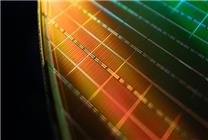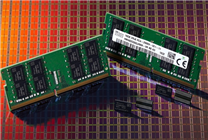SK Hynix Achieves Record Performance Amid Rising Memory Prices
Summary:
- Record Profit: SK Hynix’s Q3 performance surpasses 10 trillion won for the first time, marking a significant milestone in its financial history.
- Influencing Factors: The surge in demand and pricing for memory chips, particularly driven by the AI sector, has contributed to this performance.
- Future Outlook: Continued demand and supply constraints suggest SK Hynix may achieve even greater profits in forthcoming quarters.
In a remarkable turn of events, SK Hynix has reported its best financial performance in 14 years, capitalizing on a substantial increase in memory and flash memory prices. As the leading memory chip producer in South Korea, the company has mirrored earlier successes seen by its rival, Samsung. Recent financial forecasts indicate that SK Hynix’s quarterly revenue reached approximately 24.67 trillion won (around $17.34 billion), while operating profits soared to 11.34 trillion won, marking a significant increase from 22.23 trillion won and 9.21 trillion won recorded in the previous quarter.
For context, Samsung’s preliminary Q3 report noted an operating profit of 12.1 trillion won (about $8.5 billion), surpassing market expectations and showcasing a year-over-year increase of 31.8%. SK Hynix now proudly stands as the second South Korean chipmaker to attain quarterly profits exceeding the 10 trillion won threshold. This achievement represents a remarkable rebound for the company since its acquisition by SK Group in 2012, which initially placed substantial financial pressure on the conglomerate.
The impressive growth in SK Hynix’s financials is fundamentally tied to the skyrocketing prices of memory chips, particularly in the midst of a booming AI market. General-purpose DRAM chips have seen significant price increases, but it is the High Bandwidth Memory (HBM), especially the cutting-edge 12-layer stack HBM3e, that has driven about half of SK Hynix’s revenue. The growing demand for these specialized chips has put pressure on competitors like Samsung, showcasing SK Hynix’s strengthened position in the market.
Looking ahead, analysts predict that the memory and HBM markets will continue to experience shortages, driving prices even higher in the next three to four quarters. This favorable market condition suggests that SK Hynix may exceed its quarterly profit goal of 15 trillion won, potentially achieving this before Samsung. The higher demand and pricing for HBM memory, relative to general-purpose memory, underscores the strategic advantage anticipated for SK Hynix in the competitive landscape.
In conclusion, SK Hynix’s ability to navigate the current memory chip market dynamics, characterized by rising prices and increased demand, has positioned the company for unprecedented success. As global reliance on specialized memory technologies escalates, SK Hynix is well-poised to not only sustain its gains but also set new benchmarks in profitability and market leadership.
This article highlights the financial resurgence of SK Hynix in the context of a thriving memory chip market driven by explosive demand, particularly from sectors like artificial intelligence, while also foreshadowing the company’s potential to lead in future earnings.







